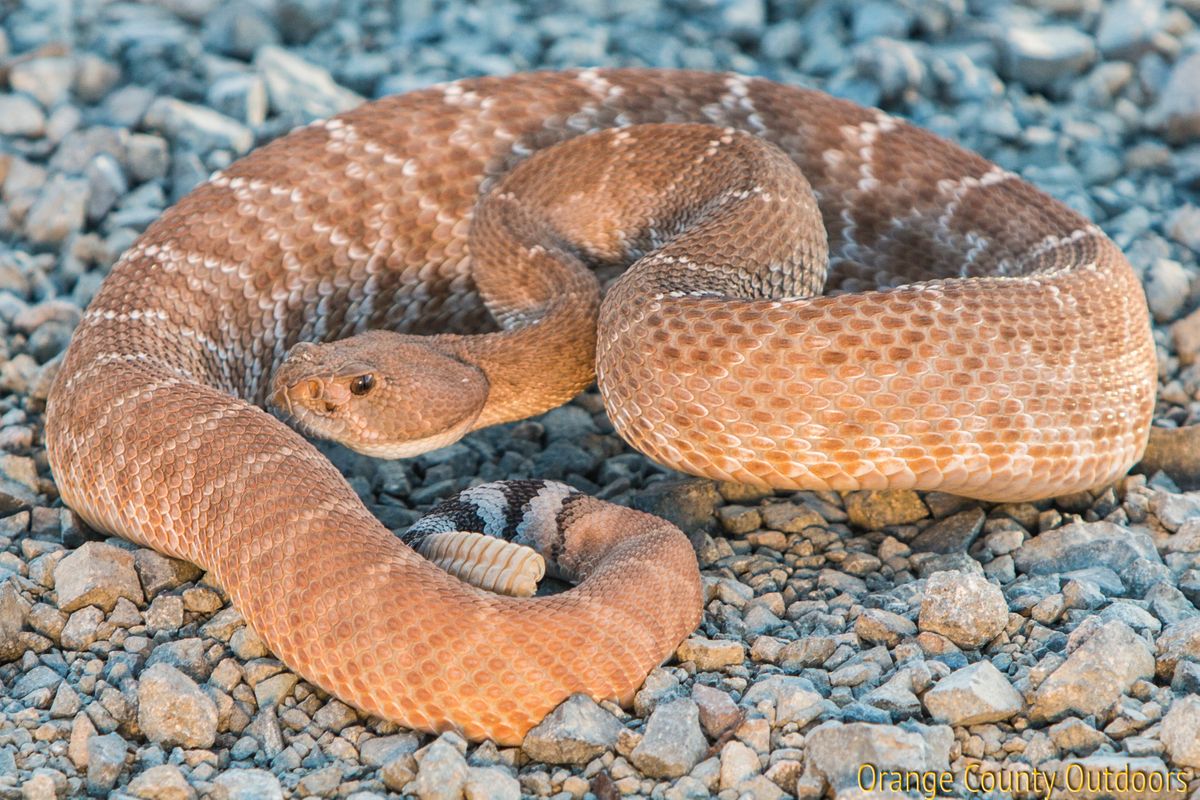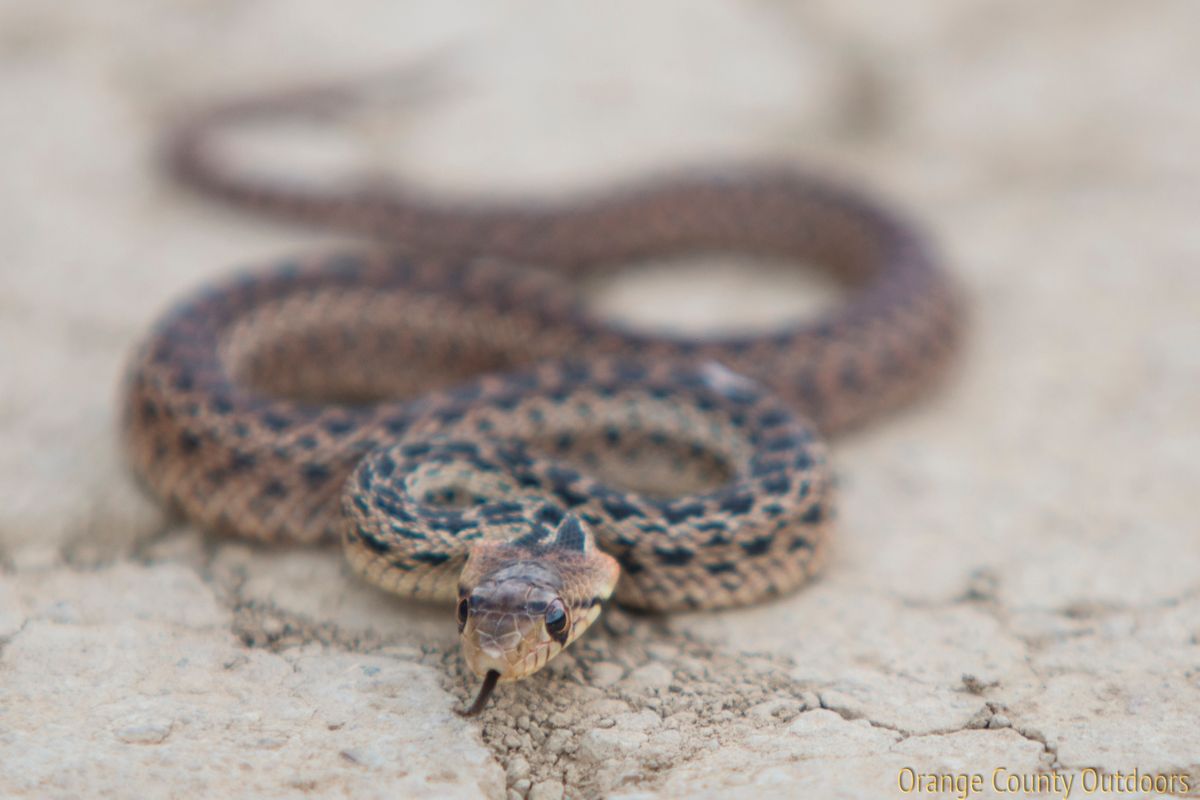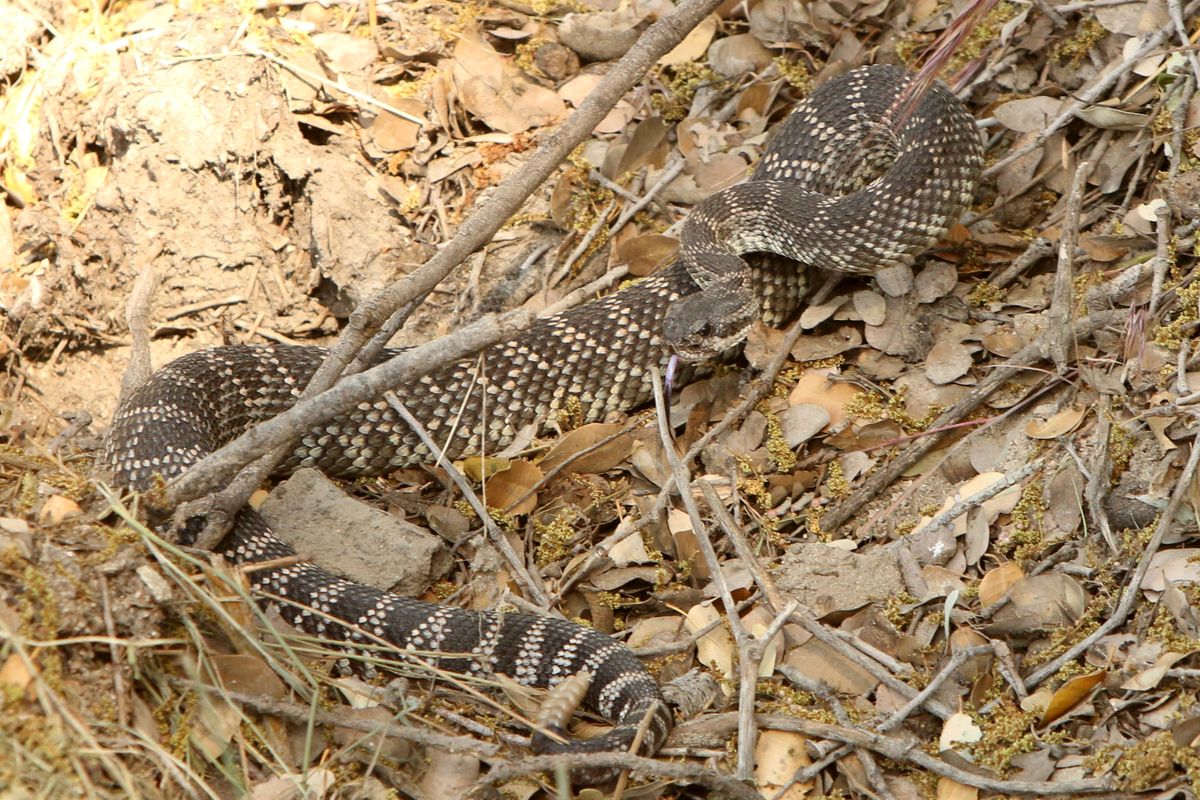What if you encounter a snake?

Differentiating venomous from non-venomous snakes
Many people have heard of the saying "Red to yellow will kill a fellow, red to black is a friend of Jack." Yes, that saying is true but not for snakes in Orange County or even California at all. That refers to the coral snakes on the East Coast.
There are three species of venomous snakes here in Orange County and all of them have rattles. Southern Pacific Rattlesnake, Red-diamond Rattlesnake, and Speckled Rattlesnake. If you see rattles on the tail of the snake, then it's a rattlesnake and is venomous. If it's a cold day, it's possible that you might find a snake that's not moving since they can't function if it's too cool out for them.
If the tail is tucked into bushed or under a rock, the eyes are also a dead giveaway. All of the venomous snakes in Orange County have vertical pupils while all non-venomous snakes have round pupils. Of course, it's never a good idea to be close enough to look at the pupils but if you are, that's an easy way to tell them apart.
Non-venomous Gopher Snake

If you see a snake...
GIVE IT DISTANCE! No matter what type of snake you encounter, they don't want anything to do with humans and just want their space. Non-venomous snakes like gopher snakes can still be dangerous because there is bacteria in their mouth so if they strike, that bacteria can be transferred to you and will land you in the hospital. If a snake is in a dangerous location like on a road where it could be ran over, try to shoe it out of the roadway if it's safe for you to do so. Snakes will often slither away to avoid a confrontation however sometimes a snake will coil up into a defensive position but they will likely uncoil if you back off a little.
Venomous Southern Pacific Rattlesnake

Why do snakes bite?
It's important to understand that no snake will seek out humans to bite, there's just no reason for them to do so. It wastes their energy, venom, and they can't eat a human. Snakes bite human as a defense, not as an aggression. If a snake feels threatened and has no other option, they will defend themselves as nature intended. This is simply a common survival strategy in the wild when their life feels threatened.
We are lucky that rattlesnakes have rattle and are actually very thoughtful. Those rattles serve as a warning to back off, they're basically telling you "Hey, I'm here, give me space!" Rattlesnakes see us as a huge animal and don't know our intentions so they will rattle and coil up before striking. Once that warning is given to you and you don't take heed to that warning that the rattlesnake gave you so generously, they will defend themselves with the only means they have, by striking you.
Non-venomous California Kingsnake

If you get bit by a rattlesnake
If you reached the point that you were bitten by a rattlesnake, that means you probably didn't respect the snakes space and that's what you got in return. Of course, there could be instances where you stepped on a snake and it just bit you thinking you were trying to kill it. If that happens, one thing you can do is pull out your phone and take a photo of the snake. The snake will likely not bite you again but having a photo to identify the species can be important to doctors later on. If you get bit by a non-venomous snake, you won't need anti-venom but you might need a tetanus booster shot. Most hospitals carry anti-venom that works for all the local rattlesnakes but it can still be helpful to doctors because certain rattlesnakes have varying venoms like hemotoxins and neurotoxins.
After you are bit by a rattlesnake, here are some very important steps to take:
1 - Keep calm, let your heart rate slow down which will slow the spread of venom in your bloodstream. Don't panic and don't run away, the snake will likely slither away anyways.
2 - Call 911 immediately as it will probably take some time for help to get to you especially if you are out hiking in the wilderness. If you are in an area without cell signal, have someone go for help. If you are hiking with someone or if you see someone else on the trail, let them know what happened and to run to call 911 when they get cell signal. STAY WHERE YOU'RE AT! You want your heart rate to stay low.
3 - If you are in a place where no people are and there is no cell signal, then of course get out and get help as soon as you can but this is a last resort.
4 - Do not apply any sort of tourniquet as this can actually be more harmful but try to keep the bitten area below your heart.
5 - Document the time you were bitten and take a photo of the bitten area with your camera phone which can be helpful to show the doctors to see how fast your wound is spreading and how much anti-venom they'll need. It is also possible that a rattlesnake dry-bit you which mean it didn't inject any venom at all and just wanted you to go away.
6 - The basics: Keep calm and get help as soon as possible!
